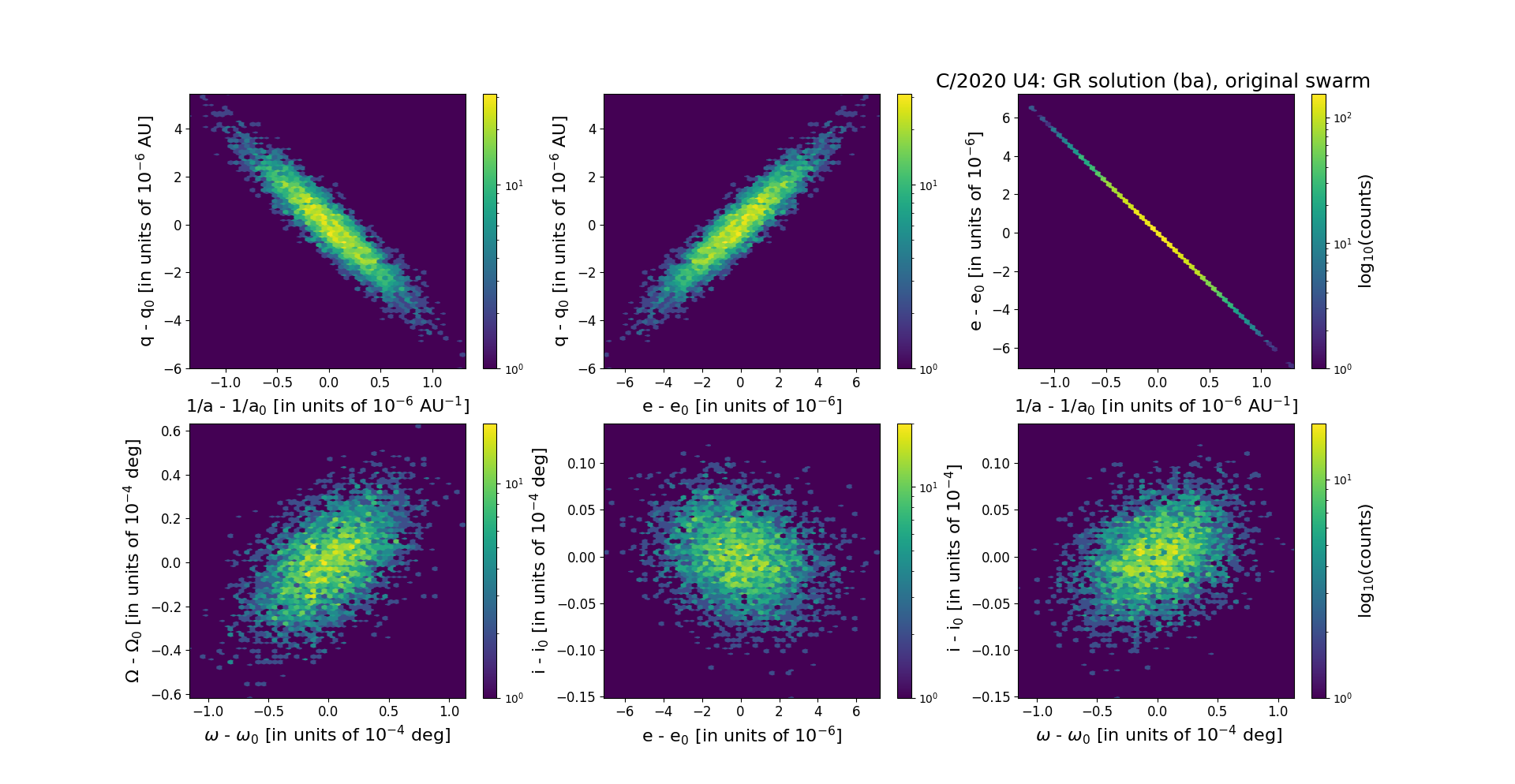C/2020 U4 PanSTARRS
more info
Comet C/2020 U4 was discovered on 22 October 2020, about 1.5 yr before its perihelion passage; later a series of prediscovery images was found going back to 9 November 2019. In the moment of orbit determination, this comet was still observed.
Solution given here is based on data span over 3.25 yr in a range of heliocentric distances: 8.24 au – 5.35 au (perihelion) – 5.81 au.Orbits based on pre-perihelion and post-perihelion data independently were also obtained.
This Oort spike comet suffers rather small planetary perturbations during its passage through the planetary system; however, they lead to escape the comet from the solar system on hyperbolic barycentric orbit.
Solution given here is based on data span over 3.25 yr in a range of heliocentric distances: 8.24 au – 5.35 au (perihelion) – 5.81 au.Orbits based on pre-perihelion and post-perihelion data independently were also obtained.
This Oort spike comet suffers rather small planetary perturbations during its passage through the planetary system; however, they lead to escape the comet from the solar system on hyperbolic barycentric orbit.
| solution description | ||
|---|---|---|
| number of observations | 957 | |
| data interval | 2019 11 09 – 2023 02 08 | |
| data type | perihelion within the observation arc (FULL) | |
| data arc selection | entire data set (STD) | |
| range of heliocentric distances | 8.24 au – 5.35 au (perihelion) – 5.81 au | |
| detectability of NG effects in the comet's motion | NG effects not determinable | |
| type of model of motion | GR - gravitational orbit | |
| data weighting | YES | |
| number of residuals | 1881 | |
| RMS [arcseconds] | 0.35 | |
| orbit quality class | 1a+ | |
| orbital elements (barycentric ecliptic J2000) | ||
|---|---|---|
| Epoch | 1716 04 15 | |
| perihelion date | 2022 04 10.66827922 | ± 0.00025919 |
| perihelion distance [au] | 5.35311444 | ± 0.00000143 |
| eccentricity | 0.99988079 | ± 0.00000197 |
| argument of perihelion [°] | 69.660828 | ± 0.000031 |
| ascending node [°] | 119.997449 | ± 0.000016 |
| inclination [°] | 167.023745 | ± 0.000004 |
| reciprocal semi-major axis [10-6 au-1] | 22.27 | ± 0.37 |
| file containing 5001 VCs swarm |
|---|
| 2020u4ba.bmi |
